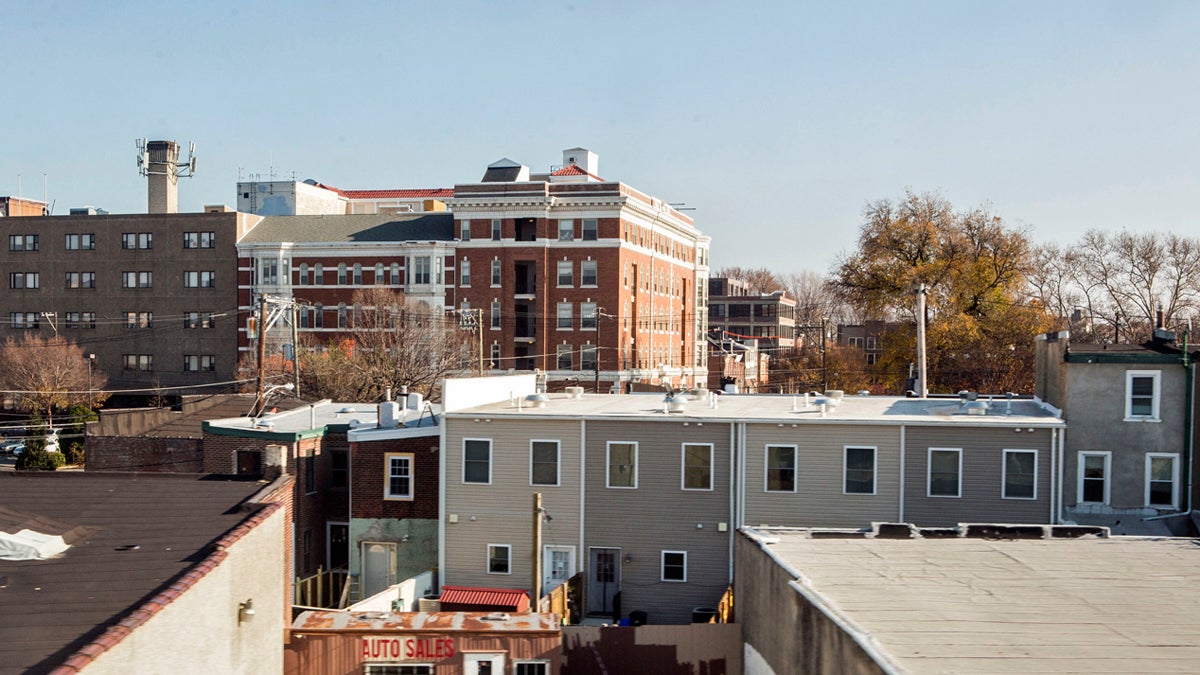Explainer: What is gentrification?

Gentrification is a bit more complex than many people realize. And not every cute corner coffee shop is a harbinger of large-scale community collapse. (Photo by Jessica Kourkounis for Keystone Crossroads)
Evil force or necessary road to economic improvement? Maybe something in between.
Take a run-down, low-income neighborhood in any major city. Add a cupcake shop, a yoga studio, a few high-rise apartment buildings and a magazine feature deeming this the next “it destination” for all the young professionals on the rise.
Crime goes down, economic development goes up, school quality improves. Rents become unmanageable for locals who then get squeezed out.
This phenomenon is known as ‘gentrification,’ a word that’s on the tip of everyone’s tongue these days.
But gentrification is a bit more complex than many people realize. And not every cute corner coffee shop is a harbinger of large-scale community collapse.
Let’s start with a definition
Urban planner Benjamin Grant defines gentrification as “a general term for the arrival of wealthier people in an existing urban district, a related increase in rents and property values and changes in the district’s character and culture.”
The Federal Reserve Bank of Philadelphia says that gentrification “describe[s] such neighborhood changes that are characterized by the influx of new residents of a higher socioeconomic status relative to incumbent residents and rising housing values.”
The result of gentrification is often displacement, or poorer residents being forced out. But gentrification itself is simply the arrival of new, higher income residents, and the cultural adjustments of the neighborhood.
Has it always been like this?
Gentrification is a relatively new phenomenon. In the 1950s and 60s, cities experienced the opposite trend, known as “white flight.” That’s when middle-class white families left the cities and moved to the suburbs, envisioning backyards, good schools and easy highway commutes into work.
Cities began to “hollow out,” with stores, restaurants, jobs and opportunities moving to the outskirts and suburbs. Cities lost their wealthy tax base but still had to provide services to low-income residents. Some city residents had to reverse-commute to work in the suburbs where they couldn’t afford to live.
In the summer of 1967, race riots broke out across the country. President Lyndon B. Johnson commissioned a report to look into the cause of this unrest. The Kerner Report’s conclusion?
“Our nation is moving toward two societies, one black, one white — separate and unequal…discrimination and segregation have long permeated much of American life; they now threaten the future of every American.”
At that point, you could have replaced the words “black” and “white” with “urban” and “suburban,” so stark were the racial divides.
Back to the city
Over the past few decades, there’s been renewed interest in cities. Many young people don’t want to spend their lives commuting by car to work. They want to live in walkable neighborhoods closer to the urban core. Baby boomers are moving in from the suburbs.
William Frey, co-author of a 2010 Brookings Institute report on the subject, told the Huffington Post, “what used to be white flight to the suburbs is turning into ‘bright flight’ to cities that have become magnets for aspiring young adults who see access to knowledge-based jobs, public transportation and a new city ambiance as an attraction.”
These young adults need somewhere to live, somewhere they can afford. They move into run-down neighborhoods and over time, work to improve them. This ‘bright flight’ initially brings more traffic to local businesses, more jobs in construction and retail, and improvements to neighborhood infrastructure. But the character of the neighborhood can change entirely as a result.
For one thing, very few urban neighborhoods have been built or expanded since World War II. Unlike the suburbs, cities can’t expand on forever. When more people move in, either landlords raise the rents on existing housing or existing housing is razed to make room for high-rise apartment buildings. Renters are particularly vulnerable to displacement, as are local businesses.
Philadelphia’s case
In October 2015, the Federal Reserve Bank of Philadelphia released a study called “Gentrification and Resident Mobility in Philadelphia.“
It found that the effects of gentrification in Philadelphia aren’t quite as predictable as some might think. For one thing, gentrification often led to positive changes for current residents, like increased credit scores. And residents in gentrifying neighborhoods move only slightly more often than those who live in non-gentrifying neighborhoods.
If they do move, residents from gentrifying neighborhoods are not necessarily likely to move to a lower-income neighborhood. They may get pushed out, but they’re not getting pushed down, that study says.
The study isn’t complete absolution for the gentrifiers, though. “Vulnerable” residents, defined as those with low credit scores, those who have been living there the longest and those without mortgages, are more likely to move to lower-income neighborhoods.
Those who do get pushed out, and down, are those who are least able to bounce back, those with the weakest safety net.
Is there anyway for wealthy newcomers to not be gentrifiers?
No, according to CityLab, which published a piece entitled, “There’s Basically No Way to Not Be A Gentrifier.“
In it, writer Daniel Hertz says, “There’s no way out, if you happen to have above-average economic power…your presence in a relatively low-income or blue-collar community will, in fact, make it easier for other college graduates to move in; to open businesses that cater to you; to induce landlords to renovate or redevelop their properties to attract other new, wealthier residents who want access to those businesses.”
Hertz says that it’s almost as bad to self-segregate only in high-income neighborhoods. The problem, he says, isn’t with gentrification or suburbanization or any of that. It’s with systems of economic segregation.
WHYY is your source for fact-based, in-depth journalism and information. As a nonprofit organization, we rely on financial support from readers like you. Please give today.


